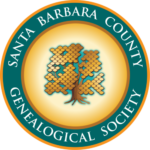Edited from a 2011 article by Society Members Cari Thomas and John Woodward.
Dr. Melville Sahyun was born in Beirut, Lebanon, and came to Santa Barbara in 1923 to participate in diabetes and cancer research at Santa Barbara Cottage Hospital. He became an American citizen in 1929, and was awarded a Ph.D. in Biochemistry and Physiology from Stanford University in 1931.
In the mid-30s he discovered the first practical method of producing crystalline insulin in its purest form, making the hormone available to millions of diabetics worldwide. His method, with modifications, is still used today in the commercial production of insulin.
Further research during World War II led to his development of Parenamine, the first injectable amino acid preparation, which is used to rebuild cell tissues of victims of severe burns, wounds, and serious diseases.
In 1950, he established the independent scientific Sahyun Laboratories in Santa Barbara, where more than 50 discoveries were made, mostly for prescription medicines. The best known of these discoveries is Visine, which reduces eye inflammation.
Dr. Sahyun was granted 40 U.S. patents, published 80 papers, and authored two books. He passed away in 1977.
Geraldine Valde Sahyun, Dr. Sahyun’s widow, was a descendant of an early Santa Barbara pioneer from England. She had an abiding interest in Santa Barbara history as a noted translator of early Spanish documents and as the co-author of the book, “Voyage of the Princesa,” based on her translation of a Spanish ship’s log of an early journey along the California coast.
In 1997, Dr. Sahyun’s family, looking for a meaningful way to honor the life of this world-renowned biochemist, heard about the Society and its search for a new home. With their love of books and family history, and their ties to Santa Barbara, the family chose the Society to be the recipient of the former site of Sahyun Laboratories.
Mrs. Sahyun died in December 1999.
